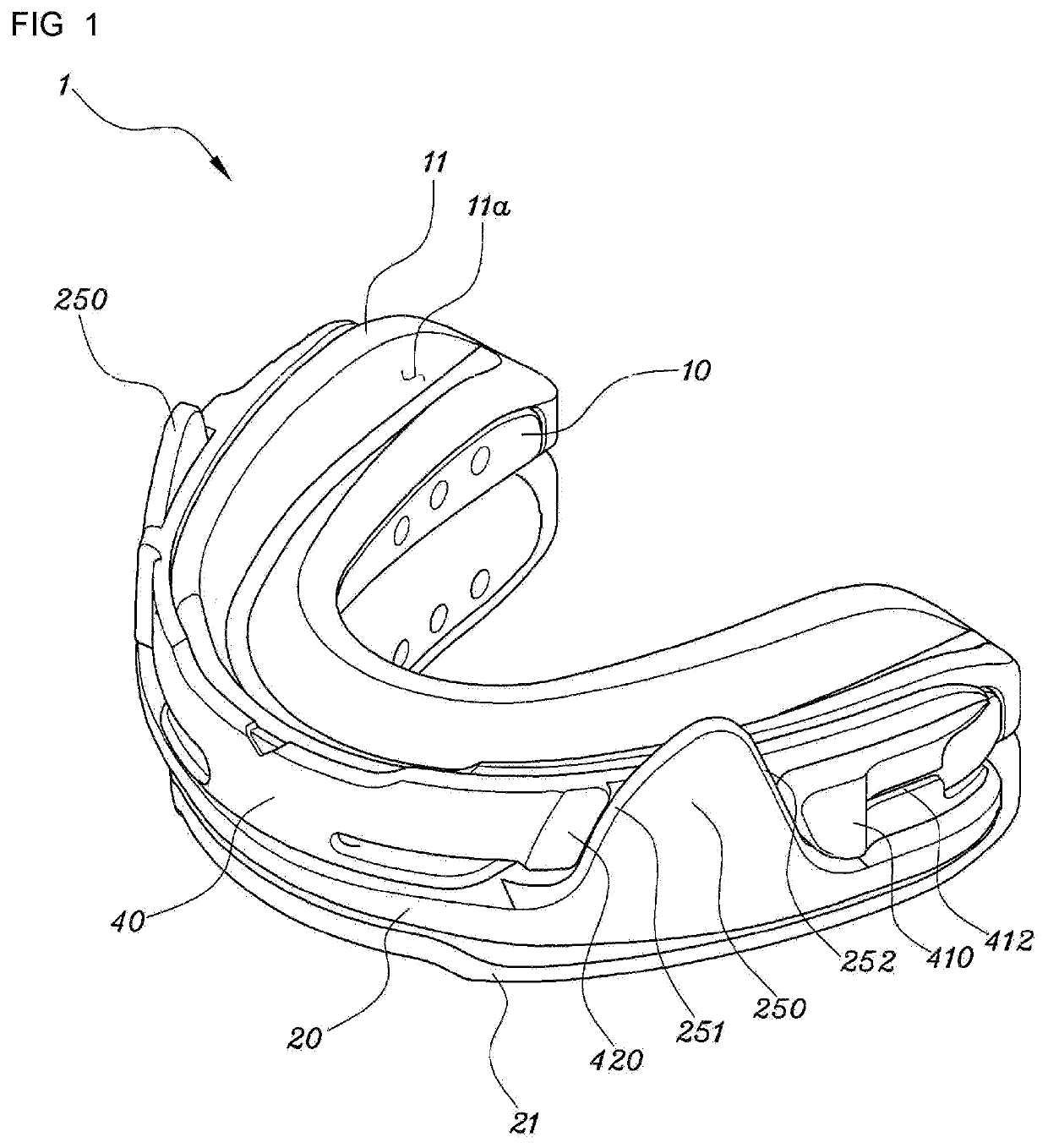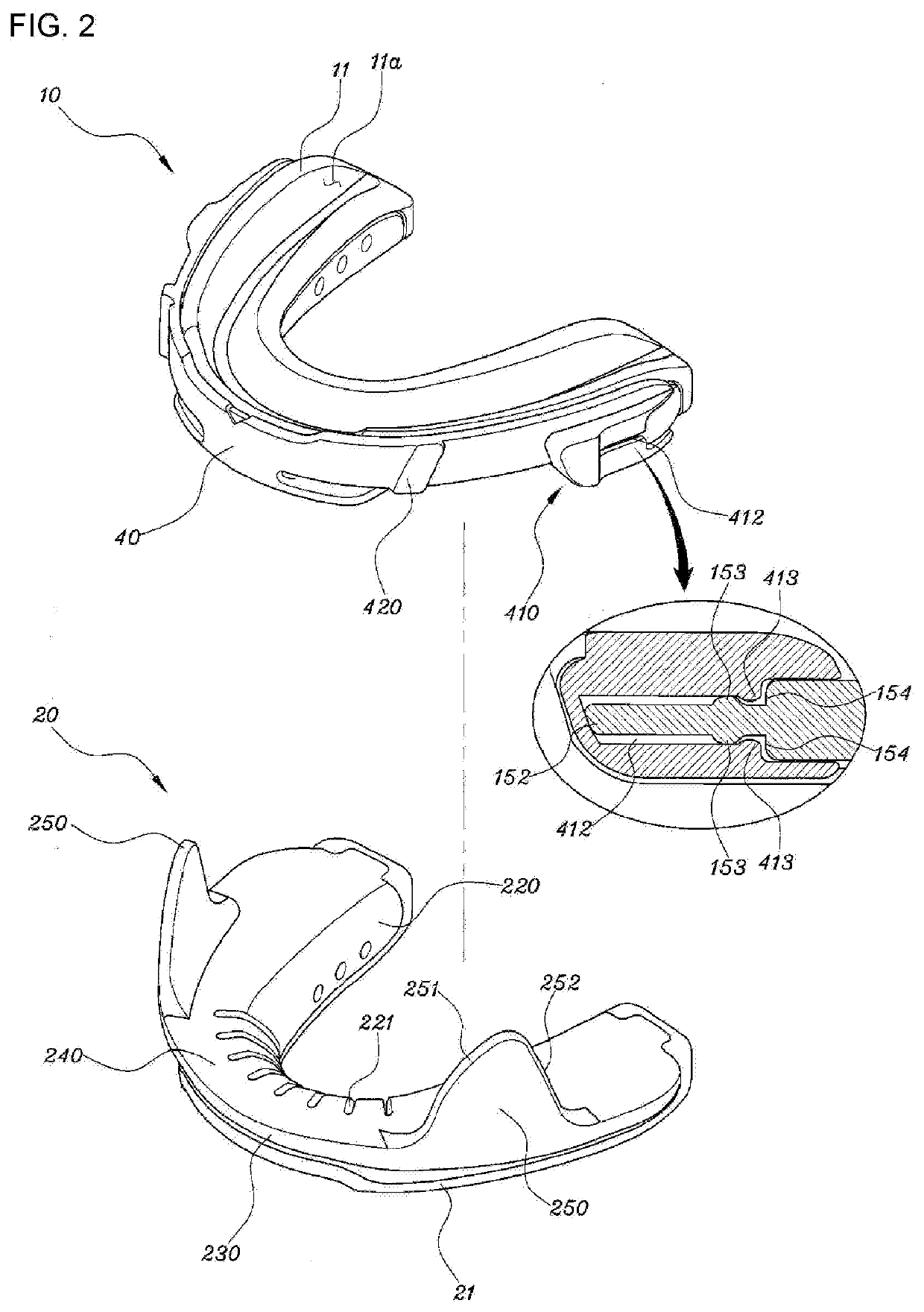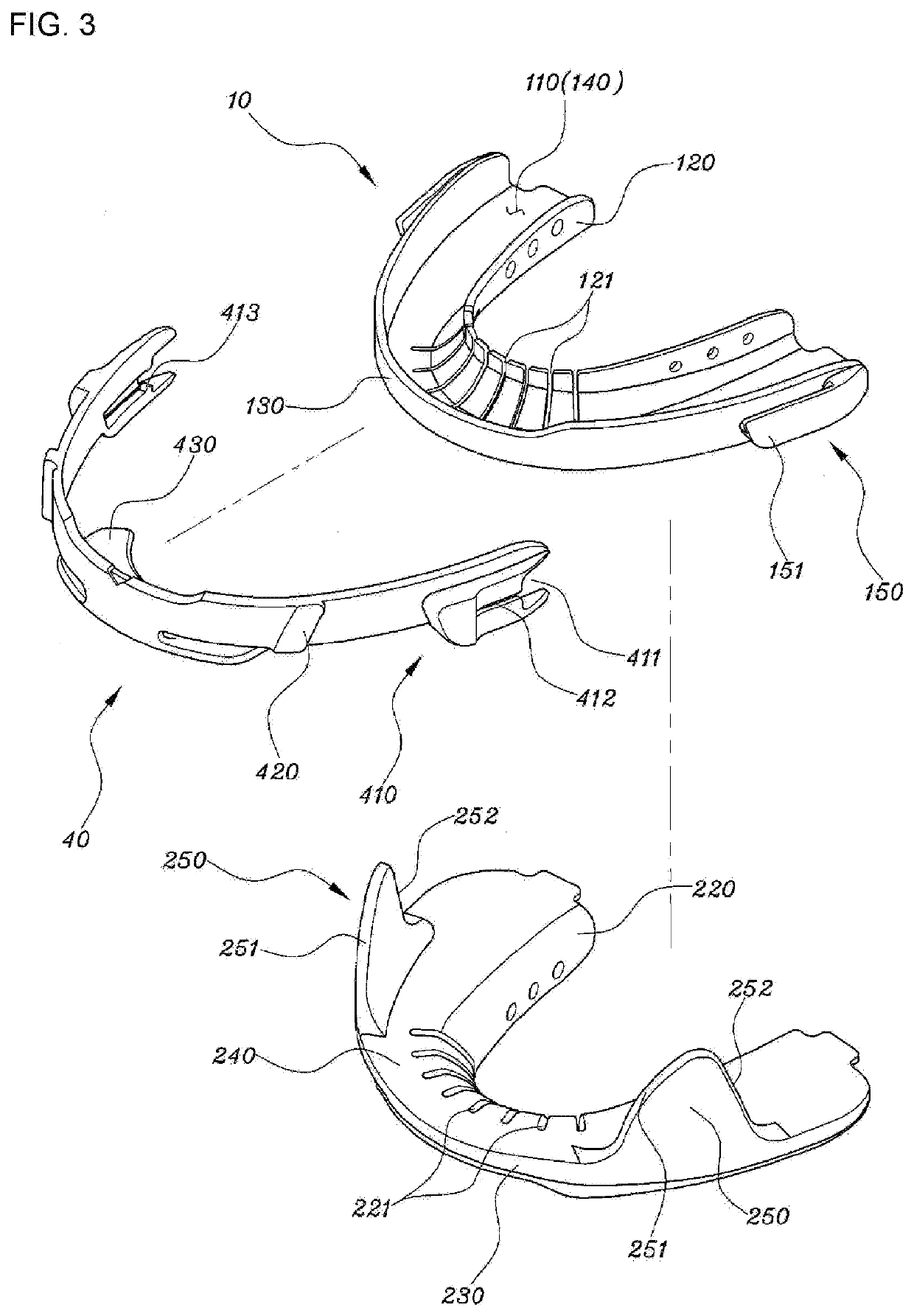Device for preventing sleep apnea and snoring
a technology for which is applied in the field of preventing sleep apnea and snoring, can solve the problems of inability to normalize breathing, insufficient oxygen supply, and possible airway obstruction, so as to prevent the possibility of inflammatory disease of gum surface tissues and prevent tooth deformation
- Summary
- Abstract
- Description
- Claims
- Application Information
AI Technical Summary
Benefits of technology
Problems solved by technology
Method used
Image
Examples
Embodiment Construction
[0062]As a best mode for practicing the present invention,
[0063]A device for preventing sleep apnea and snoring, the snoring prevention device having a dental guard 1 composed of an upper jaw guard 10 and a lower jaw guard 20 combined with an upper jaw and a lower jaw of a patient, respectively, the device including:
[0064]cut grooves 121, 221 multiply provided by being cut vertically at equal intervals along an inner side of a front end of each of the upper jaw guard 10 and the lower jaw guard 20 and spread from side to side according to a condition of a mouth of a patient such that the device is worn in the mouth,
[0065]a protrusion part 250 provided upward at each of opposite sides of the lower jaw guard 20,
[0066]a clip fixing part 150 provided at each of side surfaces of opposite ends of the upper jaw guard 10, the clip fixing part being in contact with a rear end surface of the protrusion part 250, and
[0067]a clip member 30 roundly covering a front surface of the upper jaw guard ...
PUM
 Login to View More
Login to View More Abstract
Description
Claims
Application Information
 Login to View More
Login to View More - R&D
- Intellectual Property
- Life Sciences
- Materials
- Tech Scout
- Unparalleled Data Quality
- Higher Quality Content
- 60% Fewer Hallucinations
Browse by: Latest US Patents, China's latest patents, Technical Efficacy Thesaurus, Application Domain, Technology Topic, Popular Technical Reports.
© 2025 PatSnap. All rights reserved.Legal|Privacy policy|Modern Slavery Act Transparency Statement|Sitemap|About US| Contact US: help@patsnap.com



